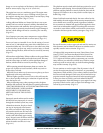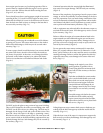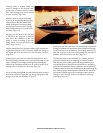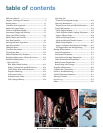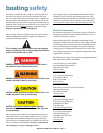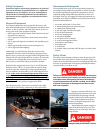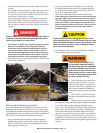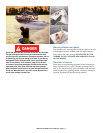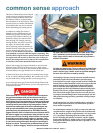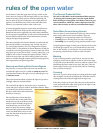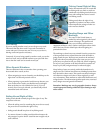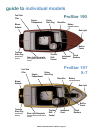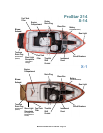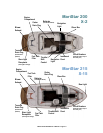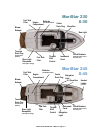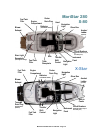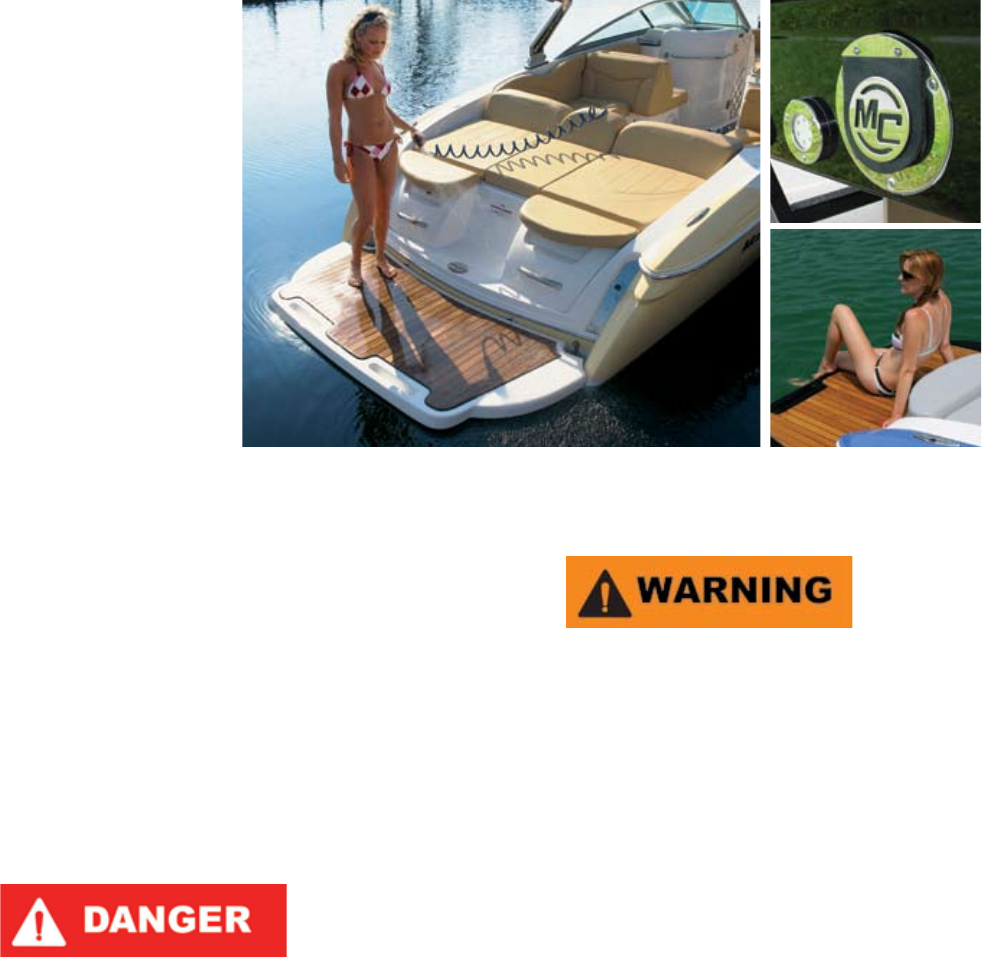
common sense approach
is Owner’s Manual has been developed
to help ensure an enjoyable experience as
you boat, wakeboard and ski with a fabu-
lous MasterCra boat. As stated earlier,
this information is not all-inclusive. ere
are many factors to consider and addition-
al information that you need to research
before undertaking any boating activity.
In addition to reading this Owner’s
Manual or other related material, and
familiarizing yourself with the proper
operation of the MasterCra boat, you
should also always use common sense
when boating. For example, when an-
choring the boat, you MUST turn OFF
the engine. In most models, exhaust
fumes containing carbon monoxide are
emitted from the exhaust ap area of the
transom immediately below the swim
platform. No one should ever be on the
swim platform or transom while the engine is operating. is
includes while using the shower option in those models where
the engine must run in order to create hot water. In those in-
stances, showering must never be done on the swim platform
or transom as the carbon monoxide fumes are toxic.
MasterCra strongly encourages individuals to wear Personal
Flotation Devices (PFDs). In many states, it is a legal require-
ment for children to wear them. Non-swimmers and swimmers
of limited ability of any age should never be without one.
A MasterCra boat can be the source of countless hours of fam-
ily fun, as well as building friendships. But it works only if YOU
use your head before, during and aer your boating activity.
As you anticipate many good times ahead with the MasterCra
boat, be sure that, rst and foremost, you are well-prepared to be
a responsible operator.
Carbon monoxide is a colorless, tasteless, odorless and poison-
ous gas that accumulates rapidly and can cause serious injury or
death. Exposure to carbon monoxide can be fatal in a matter of min-
utes. Exposure to even low concentrations of carbon monoxide must
not be ignored because the effects of exposure to carbon monoxide
can build up and be just as lethal as high concentrations. Carbon
monoxide from exhaust pipes of inboard or outboard engines may
build up inside and outside the boat in areas near exhaust vents,
particularly during slow-speed operations. STAY AWAY from these
exhaust vent areas, which are located at the stern of the boat, and DO
NOT swim or engage in any watersports or other activities in or near
the stern area of the boat, including, without limitation, the swim plat-
form and the rear sun deck, when the engine is in operation. Under
no circumstances should the owner and/or operator allow persons
to hold onto the swim platform while the engine is operating and
the boat is in motion. These activities (sometimes known as “teak
surng” or “platform dragging,” where the participant holds onto
the swim platform and is pulled through the water, and/or “body
surfs” immediately behind the boat) are extremely dangerous,
highly likely to result in death or serious bodily injury, and are a
misuse of this product.
All boats have weight limits. Failure to adhere to the posted limits
can cause operation instability and/or the boat to sink. This may
result in serious injury or death, as well as signicant damage to
the boat, which will not be covered by warranty.
Overloading a boat may cause it to become unstable and may
potentially result in the boat’s otation system becoming
overwhelmed. Too much weight can sink any boat! Within this
Manual and on a label mounted in each boat, except in the 280
and 265 models, is the weight limit for that specic model.
Bear in mind that total weight limits include water ballast,
gear brought onto the boat, additional options and all people.
Equally critical is how weight is distributed throughout the
boat. If too much weight is placed in one area it can have seri-
ous impact on maintaining control. Items and people can also
shi positions during operation, potentially causing a danger-
ous situation.
Model 280 and 265 are Yacht Certied and do not display a
listed weight limit on the boat. See information specic to
those models for guidance.
In calculating the amount of weight, you must also take into
consideration the weight of the gasoline and any ballast add-
ed. e weight of gasoline is approximately 5.8 to 6.5 pounds
(U.S.) per gallon, depending upon the weather and other
factors, including the addition of ethanol, which is slightly
denser and will add very slightly to the overall weight. Water
pumped into the ballast system will add 8.3 pounds (U.S.) for
every gallon added.
MasterCraft 2009 Owner’s Manual - Page 2-1



